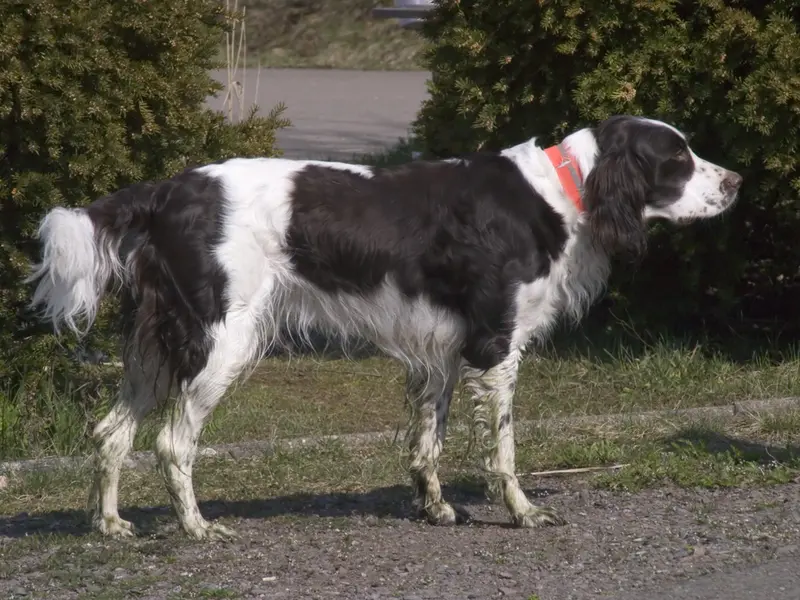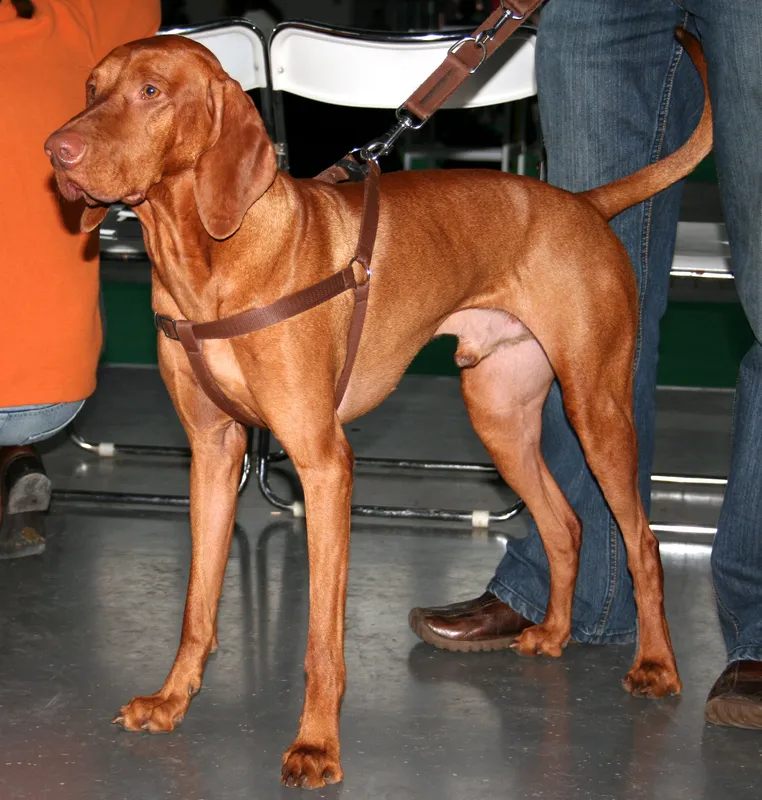American Water Spaniel
The American Water Spaniel is a medium-sized, intelligent, and friendly breed known for its versatility as a hunting companion and family pet. With a love for water and a playful spirit, they thrive in active households.
Overview
🐕Breed Overview
✨Key Traits
💡What Makes American Water Spaniel Special
The American Water Spaniel is a versatile breed that excels in both hunting and companionship. Their strong retrieving instincts and love for water make them exceptional hunting partners, particularly for waterfowl.
They are also known for their agility and endurance, making them suitable for various dog sports. Their friendly and affectionate nature allows them to bond closely with their families, and they are often described as loyal and protective.
However, potential owners should be aware of their need for regular exercise and mental stimulation to prevent boredom and associated behavioral issues. Overall, the AWS is a well-rounded breed that can adapt to various lifestyles, provided their exercise and social needs are met.
The American Water Spaniel (AWS) is a medium-sized sporting dog that embodies versatility and charm. Developed in the mid-1800s in the Great Lakes region of the United States, this breed is a product of various spaniels and retrievers, making it an exceptional hunting companion. With a solidly built, muscular frame, the AWS stands between 15 to 18 inches tall and weighs between 25 to 45 pounds.
Its coat, which can be either tightly curled or wavy, is water-resistant and comes in shades of liver, brown, or dark chocolate. As a breed, the AWS is known for its intelligence, friendly demeanor, and playful spirit, making it a wonderful family dog when given adequate exercise. They thrive in active households, particularly those that enjoy outdoor activities such as hunting or swimming.
The AWS is not only a skilled retriever but also excels in agility and obedience training, showcasing its adaptability and eagerness to please. However, potential owners should be aware of the breed's tendency to bark and its need for regular grooming to maintain its coat. With a lifespan of 10 to 15 years, the American Water Spaniel is a loyal and affectionate companion that can bring joy to any home.
🎉Fun Facts
AWS dogs are known for their love of water and retrieving.
The American Water Spaniel is the state dog of Wisconsin.
They are one of the few breeds developed in the United States.
They can excel in various dog sports, including agility and flyball.
Breed Characteristics
Family & Friends
Good Behavior
Get Up & Go
Household Harmony
Temperament & Personality
✨Key Traits
🐕Core Temperament
The American Water Spaniel is characterized by its friendly and intelligent temperament. They are eager to please and enjoy being part of family activities.
This breed is generally good with children and can be playful and affectionate. However, they may exhibit some stubbornness and require consistent training to reinforce good behavior.
While they are typically sociable with other dogs, some may show aggression towards unfamiliar dogs, making early socialization crucial. Overall, the AWS is a loyal and devoted companion that thrives in an active and engaging environment.
💫Personality Profile
The American Water Spaniel is known for its friendly and intelligent nature. They are eager to please and thrive on human interaction, making them excellent family companions.
Their playful demeanor and love for water make them particularly suited for active households. While they can be somewhat reserved with strangers, they are generally good with children and other pets when properly socialized.
The AWS is also known for its vocal nature, often barking to communicate or express excitement. Their intelligence allows them to learn quickly, but they can also be stubborn at times, requiring a patient and consistent training approach.
🔊Vocal Tendencies
The American Water Spaniel has a moderate noise level. They are known to bark, especially when excited or alerting their owners to something unusual.
While they are not excessive barkers, their vocalizations can become a concern if they do not receive enough exercise or mental stimulation. Some individuals may also whine or drool, particularly when anxious or seeking attention.
Regular training and socialization can help manage their barking tendencies, ensuring they are well-adjusted and content in their environment.
Affection & Social Traits
Energy & Activity
Communication Style
Care Requirements
🏃♂️Exercise Requirements
Daily Exercise
The American Water Spaniel (AWS) is a highly active breed that requires a significant amount of daily exercise to maintain its physical and mental well-being. Ideally, they should engage in at least 60 to 90 minutes of exercise each day. This can include a combination of activities such as long walks, runs, swimming, and playtime in a secure yard.
Swimming is particularly beneficial for this breed, as they are natural water lovers and excel in water retrieval tasks. Puppies may require shorter, more frequent exercise sessions to accommodate their developing bodies, while senior dogs may benefit from gentler activities to avoid strain. Regular exercise not only helps manage their weight but also reduces the likelihood of behavioral issues such as barking, digging, or chewing due to boredom.
Insufficient exercise can lead to restlessness and anxiety, making it crucial for owners to provide ample opportunities for physical activity.
Preferred Activities
🏠Living & Adaptability
Space Requirements
The American Water Spaniel is adaptable to various living environments, but they thrive best in homes with access to outdoor space. A fenced yard is ideal for allowing them to run and play freely.
While they can live in apartments, it is essential that owners commit to providing ample exercise and mental stimulation to prevent boredom. In smaller living spaces, regular trips to parks or open areas for exercise and socialization are necessary.
The breed's medium size and energetic nature mean that they need room to move around, and a lack of space can lead to destructive behaviors.
Climate Preference
🍲Feeding Guide
Schedule
Food Types
Portion Size
Special Nutritional Needs
The American Water Spaniel does not have any specific dietary restrictions, but it is important to provide a balanced diet rich in protein to support their active lifestyle. Owners should monitor for any food sensitivities and adjust their diet accordingly. Regular vet check-ups can help determine any additional nutritional needs, especially as the dog ages.
✨Grooming Requirements
Grooming Overview
The American Water Spaniel has a dense, water-resistant coat that requires regular grooming to keep it healthy and free of mats. Weekly brushing is recommended to remove loose hair and prevent tangles.
The coat can be trimmed for a neat appearance, particularly around the feet and ears. Regular ear cleaning is essential to prevent infections, as the breed is prone to ear issues due to its floppy ears.
Bathing should be done as needed, typically every few months, to maintain cleanliness without stripping the coat of its natural oils.
Care Schedule
Brush weekly; bathe as needed (every few months); check ears regularly.
Health Profile
⚕️Health Care
Regular health care is crucial for the American Water Spaniel's longevity. Routine veterinary check-ups, vaccinations, and preventive treatments for parasites are essential.
Early detection of health issues can significantly impact the dog's quality of life and lifespan. Owners should also prioritize dental care, as dental disease can lead to other health complications.
Maintaining a healthy weight through proper diet and exercise is vital to prevent obesity-related health issues.
Health Issues Overview
⏳Average Lifespan
Genetic Factors
Genetics play a significant role in the American Water Spaniel's lifespan. While the breed is generally healthy, certain hereditary conditions such as cataracts and hip dysplasia can affect longevity.
Responsible breeding practices that prioritize genetic diversity can help reduce the prevalence of these issues. Potential owners should seek reputable breeders who conduct health screenings and provide health clearances for their breeding stock, ensuring a healthier puppy with a better chance of a long life.
Living Conditions
The American Water Spaniel's lifespan can be influenced by various environmental factors. Dogs that live in active households with regular exercise and mental stimulation tend to live longer, healthier lives.
Access to outdoor space for play and exploration is beneficial, as is a balanced diet and routine veterinary care. Additionally, social interactions with other dogs and people can enhance their emotional well-being, contributing to a longer lifespan.
Owners should also be mindful of their dog's comfort in extreme weather conditions, as the breed has moderate tolerance to both heat and cold.
🏥Common Health Issues
Cataracts
Warning Signs
🔬Diagnosis
Veterinary eye examination.
💊Treatment
Surgical removal of cataracts, if severe.
📝Management Tips
Regular eye check-ups, early detection, and potential surgical intervention if necessary.
Progressive Retinal Atrophy (PRA)
Warning Signs
🔬Diagnosis
Veterinary eye examination.
💊Treatment
Currently, there is no cure; management focuses on adapting to vision loss.
📝Management Tips
Regular veterinary check-ups and monitoring for vision changes.
Hypothyroidism
Warning Signs
🔬Diagnosis
Blood tests to measure thyroid hormone levels.
💊Treatment
Thyroid hormone replacement therapy.
📝Management Tips
Lifelong medication and regular monitoring of thyroid levels.
Hip Dysplasia
Warning Signs
🔬Diagnosis
X-rays and veterinary examination.
💊Treatment
Surgical intervention or pain management.
📝Management Tips
Weight management, exercise moderation, and potential surgical options.
🛡️Preventive Care
🔬Cardiac Evaluation
Evaluates heart health and detects any abnormalities.
📅 Annually, especially in older dogs.
🔬Hip Evaluation
Assesses hip joint health and detects dysplasia.
📅 At 2 years of age and then every few years as needed.
🔬Ophthalmic Examination
Checks for hereditary eye conditions, including cataracts and PRA.
📅 Every 1-2 years, especially in breeding dogs.
Training
🧠Intelligence & Trainability
💪Work Drive
The American Water Spaniel has a strong work drive, stemming from its history as a hunting dog. They thrive when given tasks to complete, whether it be retrieving game, participating in agility courses, or engaging in obedience training.
Mental stimulation is just as important as physical exercise for this breed, as they can become bored and restless without sufficient engagement. Activities that challenge their intelligence, such as puzzle toys or scent work, can help satisfy their need for mental stimulation.
⚠️Training Considerations
The American Water Spaniel can exhibit some behavioral challenges, particularly if not given enough physical and mental stimulation. Common issues include barking, digging, and whining, especially when bored or anxious.
Additionally, some individuals may display food possessiveness or stubbornness during training. To overcome these challenges, consistent training methods that incorporate positive reinforcement are essential.
Engaging the AWS in various activities, such as obedience training, agility, or retrieving games, can help channel their energy productively. Socialization from a young age is also crucial to mitigate any potential aggression towards unfamiliar dogs.
📝Training Tips
Training an American Water Spaniel requires patience and consistency. They respond well to positive reinforcement techniques, such as treats and praise, which can help motivate them during training sessions.
Short, engaging obedience sessions are ideal, as they can become bored with repetitive tasks. Incorporating fun activities like retrieving games or agility exercises can keep their interest high.
It's important to establish a strong bond with the dog, as they tend to bond closely with one person. Regular socialization with other dogs and people will also help them develop into well-rounded companions.
History & Heritage
📜Origin Story
The American Water Spaniel was developed in the 19th century in the Midwest, particularly around the Great Lakes region. Hunters needed a dog that could efficiently retrieve game from both water and land, and the AWS was bred to meet these demands. Its compact size allowed it to be easily transported in small boats, and its waterproof coat made it well-suited for the cold waters of the region.
Although the exact lineage is unclear, it is believed that the breed was influenced by various spaniels and retrievers. Dr. Fred J.
Pfeifer played a crucial role in preserving the breed, establishing standards, and promoting its recognition. The AWS has since become a symbol of Wisconsin's hunting heritage, despite its rarity today.
⏳Development History
The American Water Spaniel's origins are somewhat mysterious, likely stemming from a mix of breeds including the Irish Water Spaniel, Curly-Coated Retriever, and possibly even native Indian dogs. Developed in the mid-1800s, this breed was specifically designed to be a compact and versatile hunting companion capable of retrieving game from both land and water.
The breed was initially known as the American Brown Spaniel before being officially recognized as the American Water Spaniel by the United Kennel Club in 1920 and later by the American Kennel Club in 1940. Despite its recognition, the breed remains uncommon in both show rings and homes, primarily valued for its hunting prowess.
🛡️Purpose & Historical Role
Originally bred as a versatile hunting dog, the American Water Spaniel was designed to flush and retrieve game from both land and water. Its compact size and strong swimming abilities made it an ideal companion for hunters in the Great Lakes region, where it excelled in retrieving waterfowl and upland birds.
The breed's historical role as a reliable hunting partner has continued into modern times, where it is still valued for its skills in the field. Today, the AWS participates in various hunting tests and competitions, showcasing its abilities as a flushing spaniel and retriever.
🏺Cultural Significance
The American Water Spaniel holds a special place in American history as one of the few breeds developed in the United States. Recognized as the state dog of Wisconsin, it symbolizes the region's rich hunting traditions and the need for a versatile hunting companion.
The breed's development was driven by the practical needs of hunters in the Great Lakes region, making it an integral part of the local culture. Despite its rarity today, the AWS continues to be celebrated for its unique abilities and friendly disposition, making it a beloved choice for hunting enthusiasts and active families alike.
Conservation Status
This breed is rare and not commonly found outside its region of origin.









